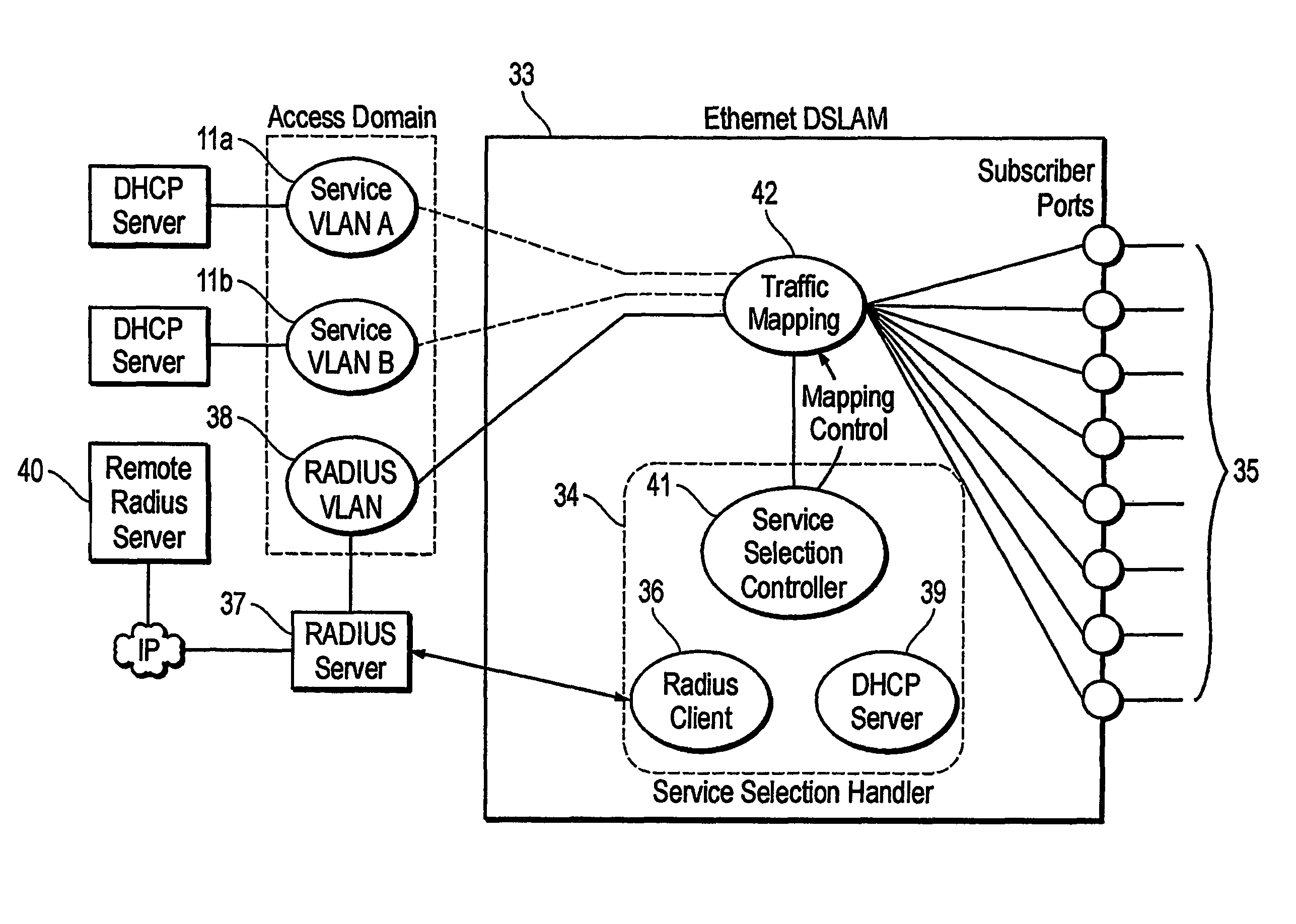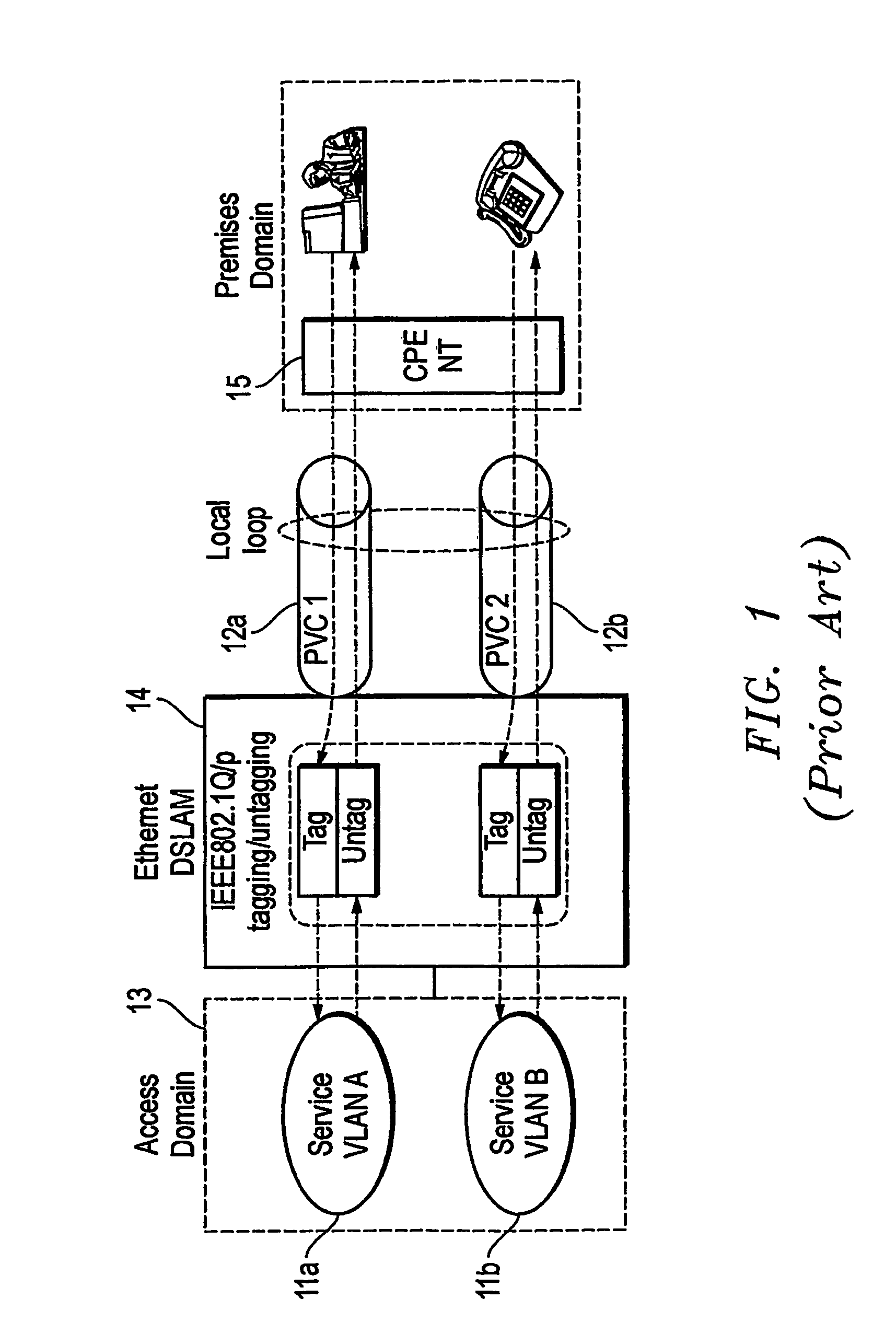Ethernet DSL access multiplexer and method providing dynamic service selection and end-user configuration
a technology of dsl access multiplexer and ethernet, applied in the field of digital communication system, can solve the problems of poor downward scalability, combined service binding, and end-user semi-static allocation to specific services
- Summary
- Abstract
- Description
- Claims
- Application Information
AI Technical Summary
Benefits of technology
Problems solved by technology
Method used
Image
Examples
Embodiment Construction
[0037]In the following description, for purposes of explanation and not limitation, specific details are set forth, such as particular embodiments, circuits, signal formats etc. in order to provide a thorough understanding of the present invention. It will be apparent to one skilled in the art that the present invention may be practiced in other embodiments that depart from these specific details.
[0038]The present invention may provide two types of service bindings, MAC granularity and VLAN granularity. MAC granularity service bindings are made between service-VLANs and end-user devices with MAC addresses visible to the Ethernet DSLAM. VLAN granularity service bindings are made between service-VLANs and end-user VLANs visible to the Ethernet DSLAM. Thus, the end-user must use an Ethernet bridging network terminal (NT) to enable bindings of either type. If the end-user uses a routing NT, only the MAC address of this NT is visible to the Ethernet DSLAM, and the end-user VLANs are not ...
PUM
 Login to View More
Login to View More Abstract
Description
Claims
Application Information
 Login to View More
Login to View More - R&D
- Intellectual Property
- Life Sciences
- Materials
- Tech Scout
- Unparalleled Data Quality
- Higher Quality Content
- 60% Fewer Hallucinations
Browse by: Latest US Patents, China's latest patents, Technical Efficacy Thesaurus, Application Domain, Technology Topic, Popular Technical Reports.
© 2025 PatSnap. All rights reserved.Legal|Privacy policy|Modern Slavery Act Transparency Statement|Sitemap|About US| Contact US: help@patsnap.com



